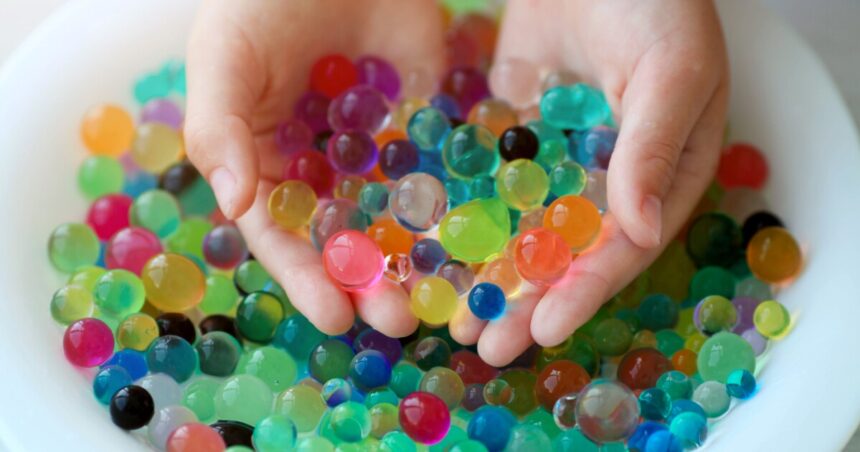Water bead-related emergency room visits increased more than 130% over the course of one year, and most cases involved children, a new study found.
Water beads are absorbent, often colorful balls made of polymer that can grow 100 times their original size when exposed to water, according to the U.S. Consumer Product Safety Commission. Although they may look harmless — “almost like candy,” CPSC says — they can cause internal injuries and even death when they expand after being ingested. Plus, some contain the known carcinogen acrylamide.
In the new study published in the American Journal of Emergency Medicine, researchers from the Center for Injury Research and Policy and Central Ohio Poison Center at Ohio’s Nationwide Children’s Hospital found that despite product recalls and safety standards set related to water bead issues in recent years, rapidly increasing rates of emergency department visits related to the product, particularly during the study’s last two years, indicate the current prevention strategies are insufficient.
Dr. Gary Smith, senior author of the study and the center’s director, stated, “Regardless of the intended user or marketing strategy used, a water bead that becomes accessible to a child has the same high-risk characteristics and potential harms. This underscores the need for a more comprehensive regulatory approach.”
RELATED STORY | More kids heading to the emergency room after ingesting small batteries, new data shows
From 2007 to 2022, the researchers in the study estimated that 8,159 patients under the age of 20 visited an ER because of water beads, with 55% of the patients being under the age of 5.
Overall, about 46% of the cases were due to ingestion, while others involved inserting the beads into their ears or nose or suffering an eye injury. However, for patients under 5, each ER visit was due to the ingestion of a water bead.
Dr. Smith highlighted that due to their expanding abilities, water beads pose a “unique increased risk of harm” to kids along with being challenging to detect with an X-ray. He emphasized that although a recent toy safety standard, ASTM F963, has restricted the size of water beads, it does not consider the serious outcomes they have caused in younger children.
RELATED STORY | Cannabis-related ER visits rose among children during the pandemic
In May 2024, three U.S. senators introduced Esther’s Law, named after 10-month-old Esther Jo Bethard who died after swallowing a water bead. The bill, which has yet to be voted on, would ban water beads that can expand by 50% or higher with liquid and would require the CPSC to ban water bead products marketed as toys.
The CPSC advises parents and guardians to remove any water beads from environments where children are present. Retailers like Target, Walmart, and Amazon have also taken action to remove these hazardous products from their shelves.
Until regulations are in place, the study researchers stress the importance of knowing what’s inside your child’s toys and ensuring that any toys containing water beads are kept out of reach.
Dr. Marcel Casavant, co-author of the study, pointed out, “Many parents are not aware that water beads can be harmful to children. If children younger than six years or with developmental delays live in or visit your home, keep water beads out of your home and communicate with childcare providers, preschool teachers, therapists, and others who may use water beads with young children.”





